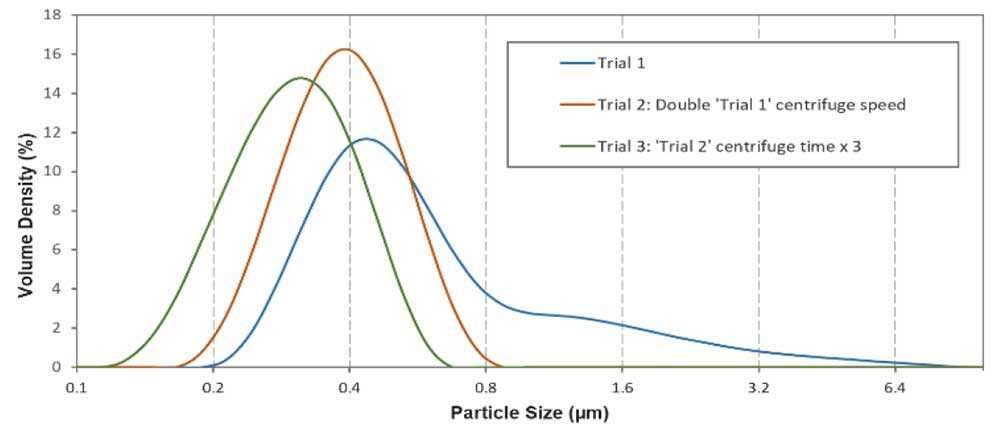EnviroMail 131 Australia - Important Changes to the Australian Standard Leaching Procedures (AS4439.2 & AS4439.3)
Standards Australia have published updated ASLP procedures for leaching waste sediments and contaminated soils – AS4439.2 (zero headspace procedure) and AS4439.3 (bottle leaching procedure).

Centrifugation versus Pressure Filtration for removal of particulates
Pressure filtration devices can also represent a source of cross contamination even where rigorous cleaning protocols are adopted between samples. Centrifugation eliminates this process as a potential source of contamination by employing single use centrifuge vessels. ALS has adopted centrifugation over pressure filtration for leaches requiring PFAS analysis.
Centrifuge Conditions
A shortfall in the standards is their failure to prescribe or provide guidance for centrifugation. Particle settling by centrifugation is dependent on the speed of rotation (dictating the exerted g-force) and time. Selection of these parameters will have a substantial impact on the concentration of analytes of interest in the analysed solution, particularly where particle-bound concentrations are significant. The below figure demonstrates how centrifuging the same leachate under different conditions can result in prominent differences in particle size distribution in the resulting solution.
ALS has invested significant effort in deriving centrifuge conditions using Stoke’s Law. Stoke’s Law describes the settling velocities of spherical particles in a fluid medium. Using this approach, ALS has developed a means of determining the centrifuge conditions (rpm and time) aimed at targeting the settling of particles down to 0.7 µm (representing the midpoint of the nominated pore size for pressure filtration).

Separate Leaches for Semi-Volatile Organics and PFAS – Incompatible Materials
Discrepancies between materials considered compliant for semi-volatile organics versus PFAS means these tests must be leached separately. The compliant material for sampling containers and leaching vessels for semi-volatile organics is glass with PTFE-lined lids (to avoid contact with plastic lids). Conversely, glass is discouraged for PFAS due to adsorption concerns (WA DER, PFAS NEMP 2.0, AS4439.2/AS4439.3, etc). As a result, the new standard stipulates PFAS be leached in a separate fit-for-purpose container (AS4439.3, Section 6.3).
Minimal 'Limited Sample Mass' Submissions
Relation to the Toxicity Characteristic Leaching Procedure (TCLP)
References
PFAS National Environmental Management Plan (NEMP), Heads of EPAs Australian & New Zealand, January 2020 (Version 2.0)
Toxicity Characteristic Leaching Procedure (TCLP), US EPA Method 1311.
WA Department of Environment Regulation (DER) – Interim Guideline on the Assessment and Management of Perfluoroalkyl and Polyfluoroalkyl Substances (PFAS), January 2017 (Version 2.1)
Get in touch with us
If you have any questions relating to the Australian Standard Leaching Procedures (AS4439.2 & AS4439.3), please contact:
Brisbane
Sydney
Melbourne
Perth























































